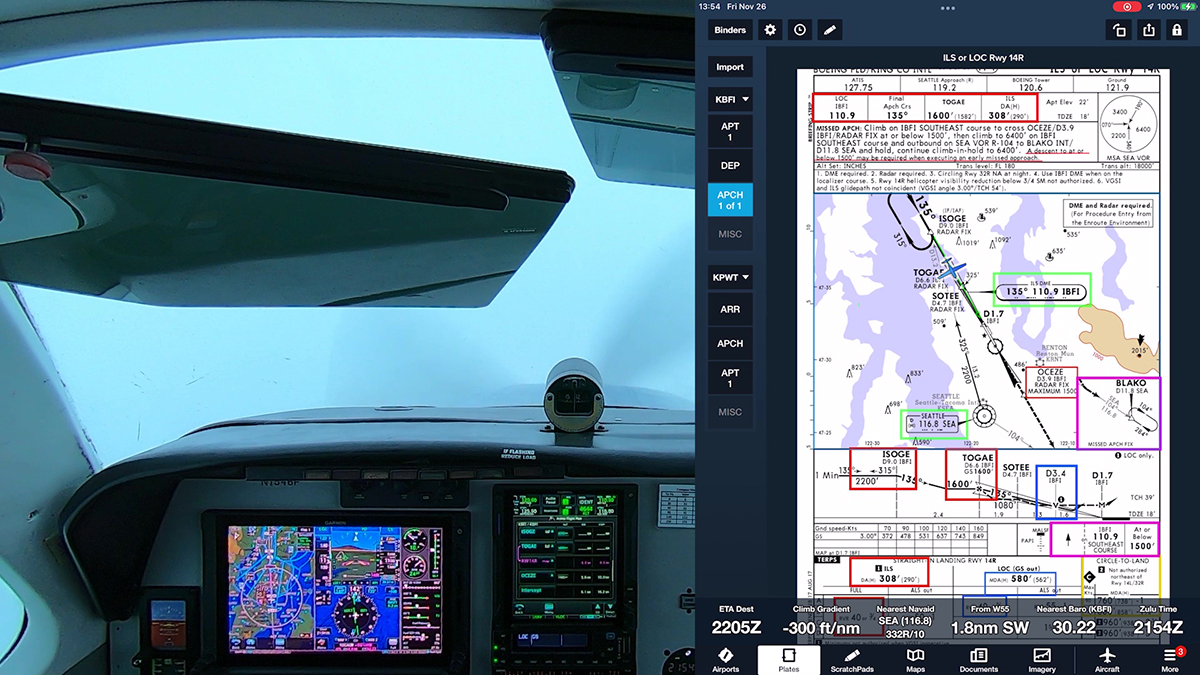I recently wrote a Tip of the Week for Pilot Workshops called The Right Time to Slow Down. That tip describes a technique I that I teach to help pilots learn how long it takes their aircraft to decelerate from normal cruise to a good speed for initial approach when IFR or to enter the traffic pattern when VFR.
The basic idea is simple:
- Set up your airplane at its normal cruise power and configuration.
- If you have an autopilot, set it to hold altitude and heading (or to track to a fix directly ahead).
- Start a timer.
- Reduce power to your normal initial approach or pattern MP and RPM.
- Note how long it takes for the airplane to stabilize at your target initial approach/pattern speed.
In an airplane like a Cessna 172, start the exercise at a typical cruise setting of 2300-2400 RPM. The airspeed should be 100-105 KIAS. Smoothly reduce power to 2000-2100, and in about 30 seconds, (as shown in the video below, captured in Microsoft Flight Simulator) the airplane will slow to about 90 KIAS, a good speed for initial approach or the traffic pattern. You’re stable, below the speed where you can extend the first 10 degrees of flaps and manage other tasks.
When I instruct in Beechcraft Bonanzas, I talk about the “happy place,” a stable configuration for initial approach and the VFR pattern. In a typical Bonanza, set the power at 17-18 in MP and 2300-2500 RPM, clean, for a speed of 125-130 KIAS. Slowing from normal cruise at about 23 in MP and 2300-2500 RPM to the “happy place” takes about 90 seconds, as you can see in the video below, also captured in Microsoft Flight Simulator.
Practicing this drill is a great exercise in an aviation training device (ATD) and in your airplane. You can experiment with several variations of speed, power settings, and flap settings (see also another Tip of the Week: Learning the Numbers) to help you quickly and consistently set up your airplane for common situations, reducing your workload and giving you more time for important tasks such as looking out for traffic, completing flows and checklists, briefing approaches, and following instructions from ATC.


In calculating time-to-slowdown, I wonder how well MS Simulator “simulates” the real airplanes? At those power reductions to slow down, are they left at those power settings when a descent starts – which of course results in an increase of airspeed?
We need several power settings:
1. Power setting to slow down at constant altitude.
2. Power setting to maintain desired airspeed at constant altitude (which will be higher than in #1)
3. Power setting during descent in cruise pre-approach (cruise descent).
4. And power setting during descent at approach speed.
Starting with #1 is a good idea. Ideally we would have several power settings for different phases of flight – some at constant airspeed and others during transitions between airspeeds. Both with different configurations – flaps, gear, etc.
I realize that your technique only applies to #1.
I have written extensively about developing a set of numbers for the aircraft that you fly. See, for example, another Tip of the Week: Learning the Numbers: https://pilotworkshop.com/tips/learning_the_numbers/
This tip specifically addresses a common issue–many pilots don’t really know how long it will take them to slow down for the situations that I described.
Microsoft Flight Simulator does a pretty good job reflecting aircraft performance in situations such as I describe in this post. And even if the specific speeds and power settings are a bit off, the fundamental idea holds. Use the technique I describe to find the numbers for the aircraft that you fly.
I have written extensively about developing a set of numbers for the aircraft that you fly. See, for example, another Tip of the Week: Learning the Numbers: https://pilotworkshop.com/tips/learning_the_numbers/
This tip specifically addresses a common issue–many pilots don’t really know how long it will take them to slow down for the situations that I described.
Microsoft Flight Simulator does a pretty good job reflecting aircraft performance in situations such as I describe in this post. And even if the specific speeds and power settings are a bit off, the fundamental idea holds. Use the technique I describe to find the numbers for the aircraft that you fly.
I have written extensively about developing a set of numbers for the aircraft that you fly. See, for example, another Tip of the Week: Learning the Numbers: https://pilotworkshop.com/tips/learning_the_numbers/
This tip specifically addresses a common issue–many pilots don’t really know how long it will take them to slow down for the situations that I described.